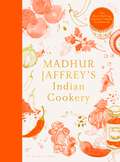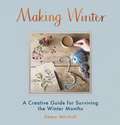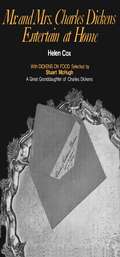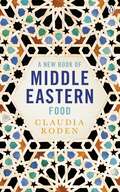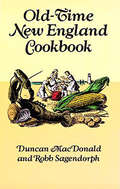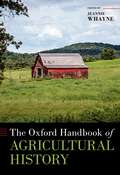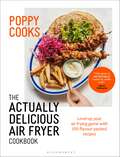- Table View
- List View
Kitchen knives (Large Print)
This is an image of three kitchen knives. The blades are pointing towards the top of the page and the handles are at the bottom. There is a locator dot shown, which will be at the top left of the page when the image is the correct way up. There are two rivets on each knife handle to secure them to the blade. The sharp edges are to the right of each knife.Test your tactile skills: - Can you find the bread knife with the serrated edge blade?- Find the small paring knife.- Which is the longest knife, the bread knife or the chef's knife on the right of the page?
Kitchen knives (UEB Contracted)
This is an image of three kitchen knives. The blades are pointing towards the top of the page and the handles are at the bottom. There is a locator dot shown, which will be at the top left of the page when the image is the correct way up. There are two rivets on each knife handle to secure them to the blade. The sharp edges are to the right of each knife.Test your tactile skills: - Can you find the bread knife with the serrated edge blade?- Find the small paring knife.- Which is the longest knife, the bread knife or the chef's knife on the right of the page?
Kitchen knives (UEB Uncontracted)
This is an image of three kitchen knives. The blades are pointing towards the top of the page and the handles are at the bottom. There is a locator dot shown, which will be at the top left of the page when the image is the correct way up. There are two rivets on each knife handle to secure them to the blade. The sharp edges are to the right of each knife.Test your tactile skills: - Can you find the bread knife with the serrated edge blade?- Find the small paring knife.- Which is the longest knife, the bread knife or the chef's knife on the right of the page?
Leek (Large Print)
This is an image of a leek standing vertically in the middle of the page. There is a locator dot shown, which will be at the top left of the page when the image is the correct way up. The leek is a member of the Allium family, which includes garlic, onions, shallots and scallions. At the top centre of the page are the leaf tips. There are lines on the image that represent the fine channels running the length of the leaves. The leaves overlap each other and at the bottom of the page, they form a solid bulb, from which the plants roots grow. The plants colour changes from dark green at the top to white at the bottom of the page where the leaves are covered with soil during growth.
Leek (UEB Contracted)
This is an image of a leek standing vertically in the middle of the page. There is a locator dot shown, which will be at the top left of the page when the image is the correct way up. The leek is a member of the Allium family, which includes garlic, onions, shallots and scallions. At the top centre of the page are the leaf tips. There are lines on the image that represent the fine channels running the length of the leaves. The leaves overlap each other and at the bottom of the page, they form a solid bulb, from which the plants roots grow. The plants colour changes from dark green at the top to white at the bottom of the page where the leaves are covered with soil during growth.
Leek (UEB Uncontracted)
This is an image of a leek standing vertically in the middle of the page. There is a locator dot shown, which will be at the top left of the page when the image is the correct way up. The leek is a member of the Allium family, which includes garlic, onions, shallots and scallions. At the top centre of the page are the leaf tips. There are lines on the image that represent the fine channels running the length of the leaves. The leaves overlap each other and at the bottom of the page, they form a solid bulb, from which the plants roots grow. The plants colour changes from dark green at the top to white at the bottom of the page where the leaves are covered with soil during growth.
Madhur Jaffrey's Indian Cookery
by Madhur JaffreyThe 40th-anniversary edition of the beloved classic book on Indian home cooking, with 11 new recipes and gorgeous illustrations.Originally published in 1982, Madhur Jaffrey's Indian Cookery was the book that accompanied the TV series that inspired a generation to cook real Indian food, not the watered down version of it that had persisted in Britain for years.Now, this stunning updated edition - featuring 11 new recipes and a foreword celebrating the 40th anniversary - will inspire even more home cooks to make real Indian food at home. Recipes include classic dals, curries, chutneys and breads, as well as countless lesser-known traditional recipes and techniques to master Indian cooking for all occasions. Madhur Jaffrey's Indian Cookery is a classic cookbook from a trusted and authoritative voice, ready for the next generation to discover these delicious, authentic, failsafe Indian recipes that have stood the test of time.
Making Winter: A Creative Guide for Surviving the Winter Months
by Emma MitchellBanish winter blues and embrace the frosty months by cosying up with Emma Mitchell’s nature-inspired collection of crafts.From delicate silver jewellery, paper-craft decorations and crocheted mittens, to foraged infusions, delicious recipes and nature diaries, Making Winter is filled with projects designed to fend off dreariness in the winter months. Step-by-step instructions and beautiful photographs, shot at Emma’s cottage in the Fens, take you through each project, so that even beginners can enjoy the mood-boosting benefits of a craft-filled winter and snuggle down in their own cosy paradise.
Mr. and Mrs. Charles Dickens Entertain at Home
by Helen CoxMr. and Mrs. Charles Dickens Entertain at Home presents an account of the life of Mr. and Mrs. Charles Dickens told in a series of parties, or "Occasions", given in their own homes. With each is given the lists of distinguished guests; a Victorian Menu taken from Kate Dickens's book What Shall We Have for Dinner?; and a matching one for use today. Recipes for carrying out both types of Menu follow each "Occasion". The book begins with the first dinner party of their married life in 1836 and ends with the completion of the book in 1852. Each chapter follows a quartet theme, with a repetition of four pages right through to the end. The first page of the quartet gives the date of the party (sometimes approximately), the home at which it was given, the guests present, and the life story. The second and third pages are devoted to matching Menus and recipes; and the fourth is an extract from Dickens's own works, chosen by his great granddaughter, Mrs. Stuart McHugh.
A New Book of Middle Eastern Food: The Essential Guide to Middle Eastern Cooking. As Heard on BBC Radio 4
by Claudia Roden'Meticulously collected, compellingly assembled, lovingly told ... informative, delectable and incredibly useful' Yotam OttolenghiClaudia Roden's A Book of Middle Eastern Food is your ultimate cookbook and guide to the rich and exotic recipes of the Middle East . . . As heard on BBC Radio 4's new 5-part series. First published in 1968, Claudia Roden's bestselling classic Book of Middle Eastern Food revolutionized Western attitudes to the cuisines of The Middle East. Containing over 500 modern and accessible recipes that are brought to life with enchanting stories, memories and culinary wisdom, this book takes readers on a cook's tour of countries including Syria, Lebanon, Egypt, Turkey, Greece and Morocco. Inside there's a delicious array of dishes to try: Hot Stuffed Vine Leaves, Sweet and Sour Aubergine Salad, Courgette Meatballs, Persian Lamb, Moroccan Tagine with Fruit and Honey, Hummus, Tabbouleh, Turkish Delight and Coconut Orange Blossom and Lemon Cake. Now in this beautiful new edition, Roden's timeless work will continue to inform and inspire as the next generation of cooks discovers its riches. 'Roden's great gift is to conjure up not just a cuisine but the culture from which it springs' Nigella Lawson
Old-Time New England Cookbook
by Robb Sagendorph Duncan MacDonaldGood old-fashioned home cooking is the keynote of this treasury of classic New England cuisine. Included are over 300 wholesome, easy-to-prepare recipes including Nantucket scallop chowder, chicken pot pie, Boston baked beans, Connecticut stuffed baked salad, apple pan dowdy, Rhode Island johnnycake, mincemeat pie, Parker House rolls, Boston cream pie, lobster five ways (boiled, baked, broiled, fried, and Newburg), Yankee pot roast, and many more.Arranged as a "seasonal cookbook," this book is designed to serve you as a sort of culinary calendar, providing useful food preparation hints and information on a day-by-day basis. The recipes call for fruits, vegetables, meat, and fish available during each season, and dishes are specially chosen to be suitable to seasonal temperatures. Moreover, the recipes are accompanied by charming observations on New England weather and the appropriateness of various foods and dishes to the time of the year.A final section contains favorite recipes from 41 famous New England inns: The Red Lion Inn, Stockbridge, Massachusetts; The Dog Team Tavern, Middlebury, Connecticut; Christmas Farm Inn, Jackson, New Hampshire; and many more. Staples of New England kitchens for generations, the dishes in this unique guide will be welcomed by anyone who delights in time-honored traditional culinary fare.
Orange (Cross Section) (Large Print)
This is a labelled image of an orange shown in horizontal cross section (cut through from side to side). There is a locator dot shown, which will be at the top left of the page when the image is the correct way up. The orange is shown in centre of the page. The roughly triangular shapes of the segments in cross section are arranged around the centre of the fruit. In each segment, near the centre of the image, there is a pip (seed) shown. This will not always be the case as many varieties have been bred to be seedless. The skin or peel of the orange comprises soft pith covered by a thin layer, commonly known as zest; it contains fruity, aromatic oils and is often used by chefs to add citrus notes to dishes. The orange can vary from six to twelve centimetres in diameter.
Orange (Cross Section) (UEB Contracted)
This is a labelled image of an orange shown in horizontal cross section (cut through from side to side). There is a locator dot shown, which will be at the top left of the page when the image is the correct way up. The orange is shown in centre of the page. The roughly triangular shapes of the segments in cross section are arranged around the centre of the fruit. In each segment, near the centre of the image, there is a pip (seed) shown. This will not always be the case as many varieties have been bred to be seedless. The skin or peel of the orange comprises soft pith covered by a thin layer, commonly known as zest; it contains fruity, aromatic oils and is often used by chefs to add citrus notes to dishes. The orange can vary from six to twelve centimetres in diameter.
Orange (Cross Section) (UEB Uncontracted)
This is a labelled image of an orange shown in horizontal cross section (cut through from side to side). There is a locator dot shown, which will be at the top left of the page when the image is the correct way up. The orange is shown in centre of the page. The roughly triangular shapes of the segments in cross section are arranged around the centre of the fruit. In each segment, near the centre of the image, there is a pip (seed) shown. This will not always be the case as many varieties have been bred to be seedless. The skin or peel of the orange comprises soft pith covered by a thin layer, commonly known as zest; it contains fruity, aromatic oils and is often used by chefs to add citrus notes to dishes. The orange can vary from six to twelve centimetres in diameter.
The Oxford Handbook of Agricultural History (Oxford Handbooks)
Agricultural history has enjoyed a rebirth in recent years, in part because the agricultural enterprise promotes economic and cultural connections in an era that has become ever more globally focused, but also because of agriculture's potential to lead to conflicts over precious resources. History is replete with stories of armies standing or falling as a result of their supply of agriculturally produced commodities. Civilizations have likewise succumbed because of famine or crop-related pestilence, highlighting the critical nature of agriculture to both regional and global society. The importance and fragility of agricultural systems will come into much greater focus because of climate change in the twenty-first century, something farmers the world over have begun to reckon with. As its implications are manifested in droughts and floods that hamper crop production, urban people will become ever more conscious of their own reliance upon agriculture. The contemporary critical evaluation of agriculture reflects a transition from a framework that celebrated the positive aspects of the evolution of agriculture to one that also explores its negative implications, such as the emergence of intensive and extractive agriculture that has worked to the detriment of indigenous peoples and disrupted traditional political economies. The Oxford Handbook of Agricultural History reflects this rebirth and examines the wide-reaching implications of agricultural issues, bringing together the many historiographical traditions within geographic regions across the world that intersect either directly or indirectly in terms of agricultural history. Contributors to this volume include historians from around the world and specialists in European, American, African, Middle East, Russian, and Asian history. Essays touch on the green revolution, the development of the Atlantic slave plantation, the agricultural impact of the American Civil War, the rise of scientific and corporate agriculture, and modern exploitation of agricultural labor. The Oxford Handbook of Agricultural History is an essential volume for those interested in the myriad ways that agricultural systems affect our world.
Pear (Large Print)
This is an image of a sweet and juicy pear, with its stalk and two leaves. It is shown slightly larger than life-size. There is a locator dot shown, which will be at the top left of the page when the image is the correct way up.The two leaves are in the top centre of the page, attached to the stalk below. Down the page from the stalk is the fruit. It is small at the top and fat at the bottom. At the very bottom of the pear is a little shrivelled bit: the remains of the flower it has grown from.
Pear (UEB Contracted)
This is an image of a sweet and juicy pear, with its stalk and two leaves. It is shown slightly larger than life-size. There is a locator dot shown, which will be at the top left of the page when the image is the correct way up.The two leaves are in the top centre of the page, attached to the stalk below. Down the page from the stalk is the fruit. It is small at the top and fat at the bottom. At the very bottom of the pear is a little shrivelled bit: the remains of the flower it has grown from.
Pear (UEB Uncontracted)
This is an image of a sweet and juicy pear, with its stalk and two leaves. It is shown slightly larger than life-size. There is a locator dot shown, which will be at the top left of the page when the image is the correct way up.The two leaves are in the top centre of the page, attached to the stalk below. Down the page from the stalk is the fruit. It is small at the top and fat at the bottom. At the very bottom of the pear is a little shrivelled bit: the remains of the flower it has grown from.
Pineapple (Large Print)
In the middle of the page is an image of a pineapple shown slightly smaller than life-size. There is a locator dot shown, which will be at the top left of the page when the image is the correct way up. The body of the fruit is in the bottom half of the page and the leaves are at the top.The green leaves of the pineapple splay out from the top of the fruit in the middle of the page. They have very sharp serrated edges. Down the page is the orange fruit of the pineapple. It is oval-shaped and covered in sharp pointy segments.
Pineapple (UEB Contracted)
In the middle of the page is an image of a pineapple shown slightly smaller than life-size. There is a locator dot shown, which will be at the top left of the page when the image is the correct way up. The body of the fruit is in the bottom half of the page and the leaves are at the top.The green leaves of the pineapple splay out from the top of the fruit in the middle of the page. They have very sharp serrated edges. Down the page is the orange fruit of the pineapple. It is oval-shaped and covered in sharp pointy segments.
Pineapple (UEB Uncontracted)
In the middle of the page is an image of a pineapple shown slightly smaller than life-size. There is a locator dot shown, which will be at the top left of the page when the image is the correct way up. The body of the fruit is in the bottom half of the page and the leaves are at the top.The green leaves of the pineapple splay out from the top of the fruit in the middle of the page. They have very sharp serrated edges. Down the page is the orange fruit of the pineapple. It is oval-shaped and covered in sharp pointy segments.
Pizza (Large Print)
This is a picture of a pizza. There is a locator dot shown, which will be at the top left of the page when the image is the correct way up. It is roughly circular but at the bottom left someone has cut out a triangular piece ready to eat. Starting at the outside of the pizza the edge of the bread base can be found, then moving towards the centre there is the tomato paste and then in the middle is the cheesy topping. On the topping there are square pineapple pieces, slices of mushroom and slices of round pepperoni sausage.
Pizza (UEB Contracted)
This is a picture of a pizza. There is a locator dot shown, which will be at the top left of the page when the image is the correct way up. It is roughly circular but at the bottom left someone has cut out a triangular piece ready to eat. Starting at the outside of the pizza the edge of the bread base can be found, then moving towards the centre there is the tomato paste and then in the middle is the cheesy topping. On the topping there are square pineapple pieces, slices of mushroom and slices of round pepperoni sausage.
Pizza (UEB Uncontracted)
This is a picture of a pizza. There is a locator dot shown, which will be at the top left of the page when the image is the correct way up. It is roughly circular but at the bottom left someone has cut out a triangular piece ready to eat. Starting at the outside of the pizza the edge of the bread base can be found, then moving towards the centre there is the tomato paste and then in the middle is the cheesy topping. On the topping there are square pineapple pieces, slices of mushroom and slices of round pepperoni sausage.
Poppy Cooks: The Actually Delicious Air Fryer Cookbook: THE SUNDAY TIMES BESTSELLER
by Poppy O'TooleTHE INSTANT NO.1 BESTSELLERTikTok superstar Poppy O'Toole shares her easy, fool-proof and actually delicious recipes for the air fryer Professional chef turned TikTok star, Poppy O'Toole shows you how to get the most out of your air fryer. With 100 recipes for cooking the perfect chips, roast chicken, baked potatoes, mac and cheese, brownies and more, as well as some surprising air-fryer delights like honey soy salmon and asparagus and mouthwatering fakeaways that won't break the bank, Poppy elevates each recipe with hacks, tips and flavour ideas so it becomes something actually delicious. From fried treats to baked goods, and tasty snacks to veggie feasts, you can cook almost anything in your air fryer, so why not try:· The perfect roast potatoes with extra crunch· Succulent chicken wings with a choice of addictive sauces – buffalo hot sauce, sweet and sticky soy sauce, or lemon and black pepper butter· Mouthwatering and healthy miso-glazed cod with added umami· Veggie corn ribs - the ultimate TikTok trend· Dippy eggs and soldiers for the breakfast of champions· Blondies with fully customisable flavours – pecan and pretzel, ginger and dark chocolate, cherries and almonds, or whatever you fancy!· Individual sticky toffee puddings for some Sunday-lunch decadence With more of us relying on quick, affordable, low-energy cooking than ever before, Poppy Cooks is the only companion you need for mastering your air fryer.

